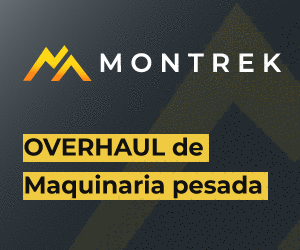The Kvanefjeld project
Greenland currently only has one major mining project, the Kvanefjeld rare earth project launched in 2007.
The project is centred on the Ilimaussaq alkaline complex in southwest Greenland, measuring approximately 8km x 15km, it is being developed by Australian company Greenland Minerals.
The Kvanefjeld project is thought to be one of the world’s biggest undeveloped resources of rare earth elements, with JORC 2012-compliant resources of one billion tonnes across three zones in the Ilimaussaq complex; Kvanefjeld, Sørensen and Zone 3.
It is claimed that the area is the world’s the sixth-largest deposit of uranium and the second-largest deposit of rare-earth oxides, with 11.1 million tonnes (Mt) of rare earth oxide and 593 million pounds of uranium. The complex also hosts a rare rock-type known as lujavrite.
These rare earth resources could be invaluable for the US, with the US-China trade dispute calling the US supply of rare earths into question. Rare earth metals are an essential material for electronics and China currently supplies around 95% of the world’s demand for rare earths, so it could be in the US’ interests to secure a supply of these metals.
The Kvanefjeld deposit, which is the only part of the project currently being developed, is estimated to hold 143Mt of measured resources alone.
The project’s pre-feasibility study was completed in May 2012, with the feasibility study being completed in May 2015. The mine is estimated to have an initial production life of 37 years, based on an ore processing rate of three million tonnes per annum.
Greenland’s mineral reserves
While the Kvanefjeld project is Greenland’s only major mining project currently, the country has other mineral reserves that have made it an area of interest for a number of countries and mining companies.
These mineral resources have become more accessible in recent years due to global warming, with the ice sheets that cover around 80% of Greenland melting and making mining operations in the country more viable. This resource potential includes rare earth metals, gemstones and iron ore.
BlueJay Mining’s Dundas project is attempting to capitalise on this potential. First discovered in 1916 and granted government approval in July 2017, and is currently at the permitting stage, with the company advancing an optimized pre-feasibility study. The Dundas project is thought to hold the world’s highest-grade mineral sand ilmenite – the key ore in titanium.
Another significant investment in Greenlandic mining is the Tanbreez project, which is one of the largest resources of heavy rare earth metals in the world and is thought to hold the world’s biggest deposit of dysprosium.
However, despite this resource potential little has been done in Greenland to capitalise on the mineral reserves. The Kvanefjeld project remains the only substantial investment in Greenlandic mining, and although smaller mining efforts such as Dundas and Tanbreez have attempted to make use of Greenland’s resources these efforts are few and far between.
This lack of investment in the country’s mineral resources makes it difficult to quantify Greenland’s resource potential, which in turn makes it difficult for mining companies to capitalise on the opportunities in Greenland.
Greenland’s geography also poses some unique problems for mining companies. While global warming has caused the sheet ice covering much of Greenland to melt, the ice that remains still prevents companies from exploring in Greenland and taking advantage of the potential mineral resources in the country.
It is clear that despite the challenges of operating in what can be an inhospitable country, there is great mineral potential. But it is unlikely that this will be developed by the US, with Denmark’s Prime Minister Mette Frederiksen quick to call the suggestion that Trump could buy Greenland “absurd”.
“Greenland is not Danish. Greenland is Greenlandic. I persistently hope that this is not something that is seriously meant.”





